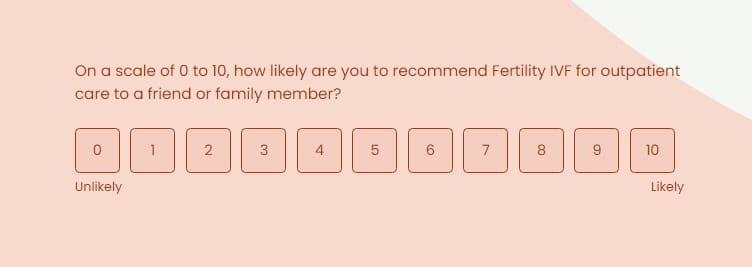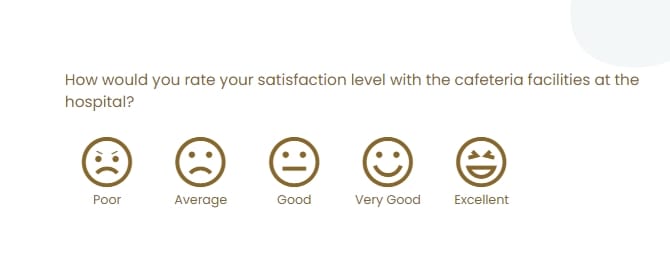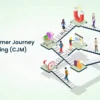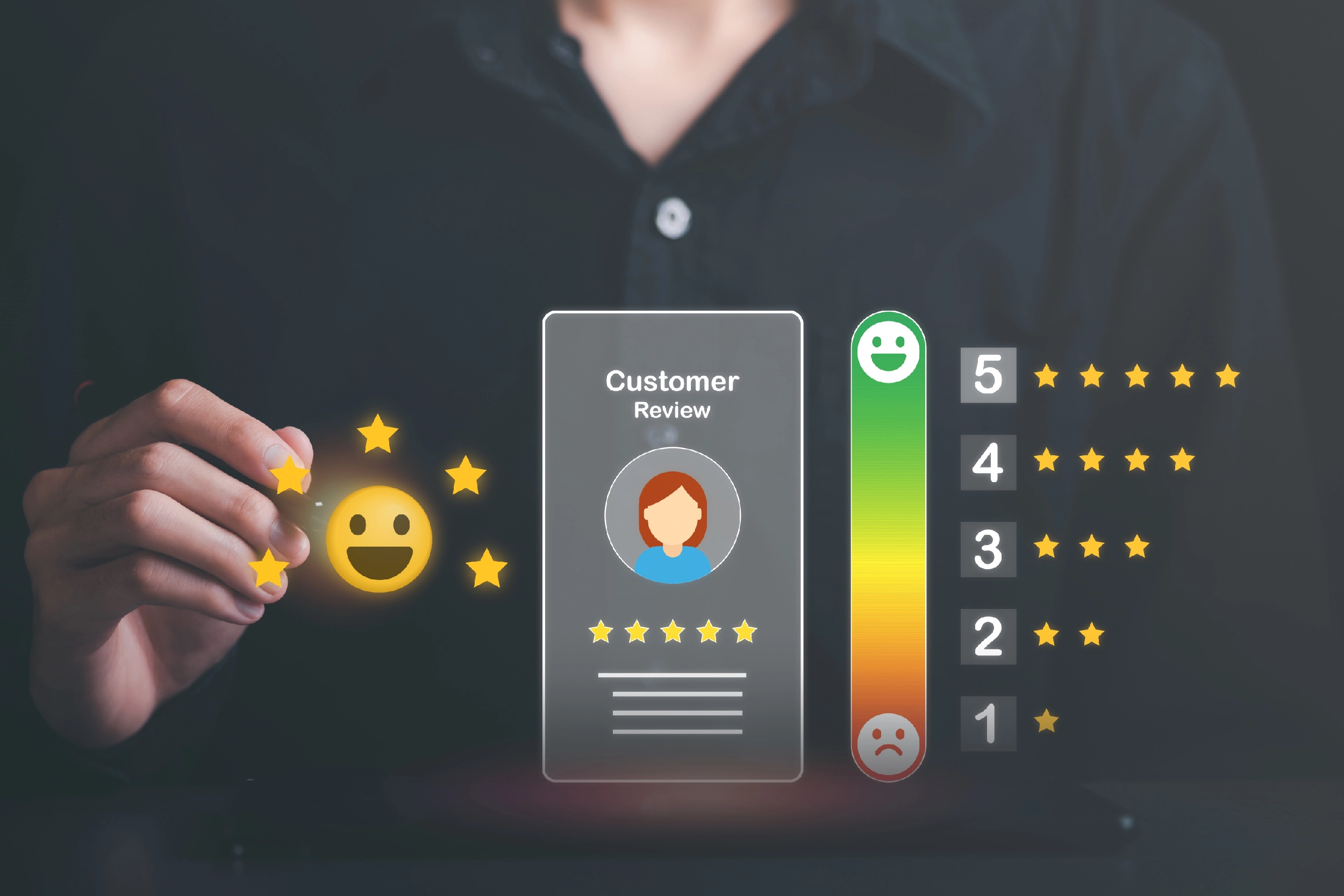We all know that the best way to know what customers are thinking is to conduct surveys and gather their genuine feedback. There are many types of customer experience surveys, but the most talked about ones are undoubtedly CSAT and NPS® surveys.
In this NPS® vs CSAT blog, we will explore what NPS® is, what CSAT is, how to calculate them, differences between them, and more.
What is NPS®?
Net Promoter Score® or NPS® is a customer experience metric developed by Fred Reichheld (a partner at Bain and Company) in 2003. It was created as a means to measure how companies treat employees, which in turn impacts loyalty.
In simple terms, NPS® measures customer loyalty by asking a simple question like “How likely are you to recommend our company to others?”. With NPS®, businesses can easily measure how satisfied customers are with their brand and whether they will recommend it to others.
What is CSAT?
CSAT simply means customer satisfaction, which is another customer experience metric. It measures customer satisfaction levels or how satisfied customers are with your product, service, or company.
CSAT question goes like “How satisfied are you with our product?”. Respondents usually choose between “highly dissatisfied” to “highly satisfied” depending on their level of satisfaction.
NPS® vs CSAT scale
CSAT and NPS® have different response scales. Here is a quick overview of the NPS® vs CSAT scale:
NPS® scale
NPS® scale ranges from 0 to 10. Based on the responses given, customers are further classified into:
- Promoters: Customers who choose 9 or 10. They are highly satisfied customers who actively engage with the brand and promote and recommend the brand to their friends and family.
- Passives: Customers who choose 7 or 8. They are somewhat satisfied customers but do not necessarily recommend the brand to others.
- Detractors: Customers who choose between 0 to 6. They are extremely dissatisfied customers who spread negative word of mouth, thus affecting brand image and reputation.
CSAT scale
CSAT scale can be a 3-point, 5-point, or 7-point scale. In general, the 5-point scale is mostly used where the options are listed like this:
- Highly dissatisfied
- Dissatisfied
- Neutral
- Satisfied
- Highly satisfied
How to calculate NPS®?
To calculate the Net Promoter Score®, you have to remove the percentage of detractors from the percentage of promoters.
NPS® formula = Percentage of promoters – Percentage of detractors
NPS® score can range from –100 to +100.
How to calculate CSAT?
Coming to the CSAT, you need to combine the total number of satisfied and highly satisfied responses (4 and 5 rating on a 5-point scale), divide it by the total number of responses, and multiply it with 100.
CSAT formula = (Number of satisfied responses (customers who gave a 4 and 5) / Total number of responses) x 100
CSAT score can range from 0 to 100.
Differences between CSAT and NPS®
Even though both NPS® vs CSAT are customer experience metrics, they measure and serve different purposes. Here are the key differences between CSAT and NPS®:
| CSAT (Customer Satisfaction) | NPS® (Net Promoter Score) |
| Measures customer satisfaction | Measures customer loyalty |
| Short-term evaluation For instance: short-term customer satisfaction | Long-term evaluation For instance: long-term customer loyalty |
| Transactional metric | Relational metric |
| Is about customer experience after a short interaction | Is about overall customer experience with the company as a whole |
| 0 to 10 scale (standard) | 3-point, 5-point, and 7-point scales |
| Conducted frequently | Conducted occasionally |
NPS® vs CSAT: Which customer experience metric to use?
Now that you know about CSAT and NPS®, an important question might arise “Which metric is the best?”. To be honest, there is no official answer, as they serve two different purposes. So, that is why here is a quick summary of where to use which metric:
When to use CSAT surveys:
- If you want to measure short-term customer satisfaction.
- If you want to evaluate the customer’s immediate satisfaction level with a specific interaction.
When to use NPS® surveys:
- If you want to measure long-term customer loyalty.
- If you want to focus on the overall experience and satisfaction over time, not just a single interaction.
In short:
- It is best to conduct CSAT surveys after every interaction or at different touchpoints.
- It is best to conduct NPS® surveys after the whole interaction comes to an end.
Tips for conducting NPS® and CSAT surveys
NPS® vs CSAT surveys are relatively simple to conduct, but here are some tips to boost survey response rate:
1.Keep the questions simple. One of the reasons why NPS® and CSAT surveys have become quite popular and successful metrics is because of their simplicity. So, make sure to keep the questions simple and do not over complicate the question format or structure.
2. Focus on the length of the survey. It is best not to add too many questions in a survey, which might lead to survey fatigue. When your customers are tired or bored, there is a high chance that they might not complete the survey.
3. Add text box follow-up questions. If you want to gather actionable insights, the best way is to add follow-up questions to the survey. For instance, after the NPS® question, you can add a text box question asking, “Please let us know the reasons behind your score.” This way, you can collect both qualitative and quantitative data.
4. Choose a good survey design. As you know, visual appeal is something to watch out for. That is why it is best to choose a template design that is not too cluttered. Make sure the design does not block the text (survey questions).
5. Add the brand logo to the survey design. What’s a better way to make your brand stand out than by adding your logo to the survey design? Include the company logo as a branding element to enhance brand identity.
6. Use the company domain to send the surveys. Rather than using personal email IDs, it is best to send the surveys to the customers via a custom company email domain. This will authenticate your email, so customers are likely to put more trust in it, thus increasing the open rate.
7. Get the timing right. For instance, if you want to send CSAT surveys, make sure to send the survey right after the specific interaction to collect genuine and accurate feedback. In the case of NPS® surveys, once the customer is done with the whole interaction, you can send the survey.
8. Send reminder emails. If a customer is yet to complete the survey, it is best to send a follow-up email as a reminder. You can use an integrated feedback tool using which you can automatically send automatic reminder emails to the customers.
Send NPS® and CSAT surveys with piHappiness
piHappiness is an end-to-end customer experience platform designed to meet all your survey needs. Whether you want to send NPS® surveys or conduct CSAT surveys, our platform is here to make things easier.
You can choose pre-designed templates (customize it if you want) and hit that send button. On the other hand, you can start from scratch as well – prepare the survey questions, add a template, choose the rules, and hit that send button.
And the best part is AI-enabled response processing and real-time analytics. You can see the feedback in real-time, find patterns and trends, and go through sentiment analysis to understand what your customers are truly feeling.
We are just a message away, so you can contact us or fill out this form to schedule a demo.










